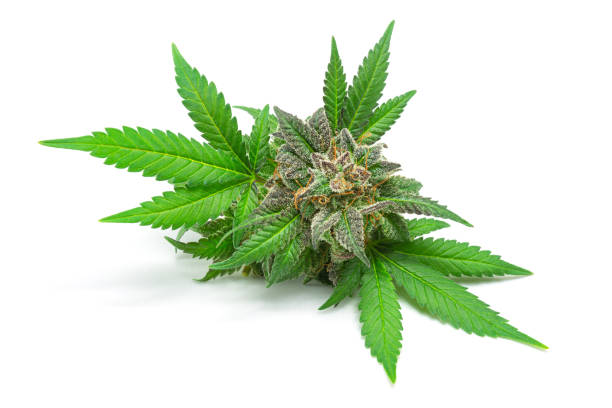Growing weed can be both exciting and challenging. To ensure you get the best quality harvest, one crucial step you can’t ignore is flushing your weed plants. This guide will take you through why, when, and how to flush weed plants in soil, ensuring your plants grow optimally and yield high-quality buds.
In this article, we’ll explore:
- The Importance: Learn why it is a crucial step towards ensuring they grow healthily and produce high-quality buds.
- When to Flush: Discover the optimal timing to maximize the benefits of this process.
- How to Flush Your Plants: Get a step-by-step guide on the process, ensuring you can apply these techniques effectively for the best possible harvest.
What Is Flushing?
It means giving your weed plants plain water with no nutrients in the final days before harvest. This process removes excess nutrients from the soil and the plant itself, leading to a purer and higher quality harvest.
Why Flush Weed Plants?
Flushing weed plants in soil is a technique that can significantly impact the final quality and purity of your cannabis harvest. The rationale behind this practice is rooted in the idea of clearing any leftover nutrients from the soil and the plant’s system, which can accumulate over the growing season due to fertilization. This process is critical for growers seeking to enhance the taste, aroma, and overall smoothness of the final product.
- Taste and Burn Quality: It improves the taste and smoothness of your final product. Plants that aren’t flushed well may have a chemical or bitter taste and could burn unevenly.
- Plant Health: It helps the plant use up stored nutrients, focusing energy on flower production.
- Cleaner Product: By doing the process, you ensure that the final product is as clean as possible, removing unwanted nutrients and chemicals.
- Minimize Harshness: Excess nutrients can cause harshness when smoked or vaped, resulting in an unpleasant experience for the consumer.
- Prevent Nutrient Lockout: It ensures that there are no leftover nutrients in the soil that may hinder nutrient absorption and growth in future plants.
When to Flush Weed Plants
The right time to start depends on their growth stage and the strain. Generally, it’s best to start:
- In Soil: About two weeks before the expected harvest date.
- Strain Dependent: Indica strains might require less time compared to Sativa strains due to their shorter flowering time.
- Trichome Inspection: Some growers prefer to flush when the trichomes are mostly cloudy and have a few amber ones for a more potent and euphoric high. However, this is subjective and can vary depending on personal preferences.
- Fallow Period: Some growers may also choose to let their plants have a “fallow period,” where they stop feeding the plant any nutrients and only provide water for a certain amount of time before harvesting.
How to Flush Weed Plants in Soil
The process is simple but requires careful attention. Here’s how to do it:
1. Stop Feeding Nutrients
Two weeks before your scheduled harvest, stop feeding your plants nutrients and switch to plain water.
2. Water Your Plants Normally
Water as you typically would, but use only plain, pH-balanced water. If you’re unsure about the pH levels of your water, aim for a pH level between 6.0 and 7.0, which is ideal for cannabis grown in soil.
3. Check the Runoff
Although not mandatory, you can check the runoff water’s pH and electrical conductivity (EC). This tells you whether the nutrients are washing out of the soil. A lower EC in the runoff compared to the input suggests that nutrients are being removed from the soil.
4. Monitor Your Plants
Keep an eye on your plants during the period. You may notice the leaves turning yellow or brown; this is normal. It means the plant is using its stored nutrients.
5. Dry and Cure Properly
After harvest, ensure you dry and cure your buds properly for the best taste, smell, and potency. This step is just as crucial as the process.
Tips for Success
- Water Quality: Use clean, filtered water. Tap water can contain chlorine and other chemicals that might affect the taste of the harvest.
- Be Patient: The whole process takes time. Don’t rush it. It takes at least two weeks.
- Observe: Pay close attention to how your plants react. Every strain might respond differently.
- Avoid Overwatering: Although it involves regular watering with plain water, be careful not to overwater the plants, as this can lead to root issues and fungal growth.
- Avoid Disturbing Trichomes: Be gentle with your plants to avoid knocking off trichomes, which are essential for potency.
FAQs
Q: Can I flush my plants too early?
A: Yes, starting too early might stunt your plant’s growth and affect the yield. Stick to the recommended timeline.
Q: Is it only for soil-grown plants?
A: No, but the method and timeline can vary. This guide focuses on soil-grown plants.
Q: Do autoflowers need them?
A: Yes, autoflowers also benefit from it for the same reasons any cannabis plant would. However, the timing might differ due to their shorter growth cycle.
Bottom Line
In summary, flushing is an indispensable step in cultivating cannabis that should not be overlooked. The benefits of it—ranging from improved taste and burn quality of the final product to ensuring the health of your plants—are too significant to ignore. By following the guidelines provided, growers can ensure their cannabis is as pure and high-quality as possible. Remember, the key to success lies in timing, patience, and attentiveness to the needs of your plants. For more insights and detailed guides on growing cannabis effectively, visit BudTrainer. Here, you’ll find a wealth of resources designed to help you achieve the best possible harvest, reinforcing the importance of practices in the cultivation process. Happy growing, and may your efforts lead to bountiful and quality yields!

